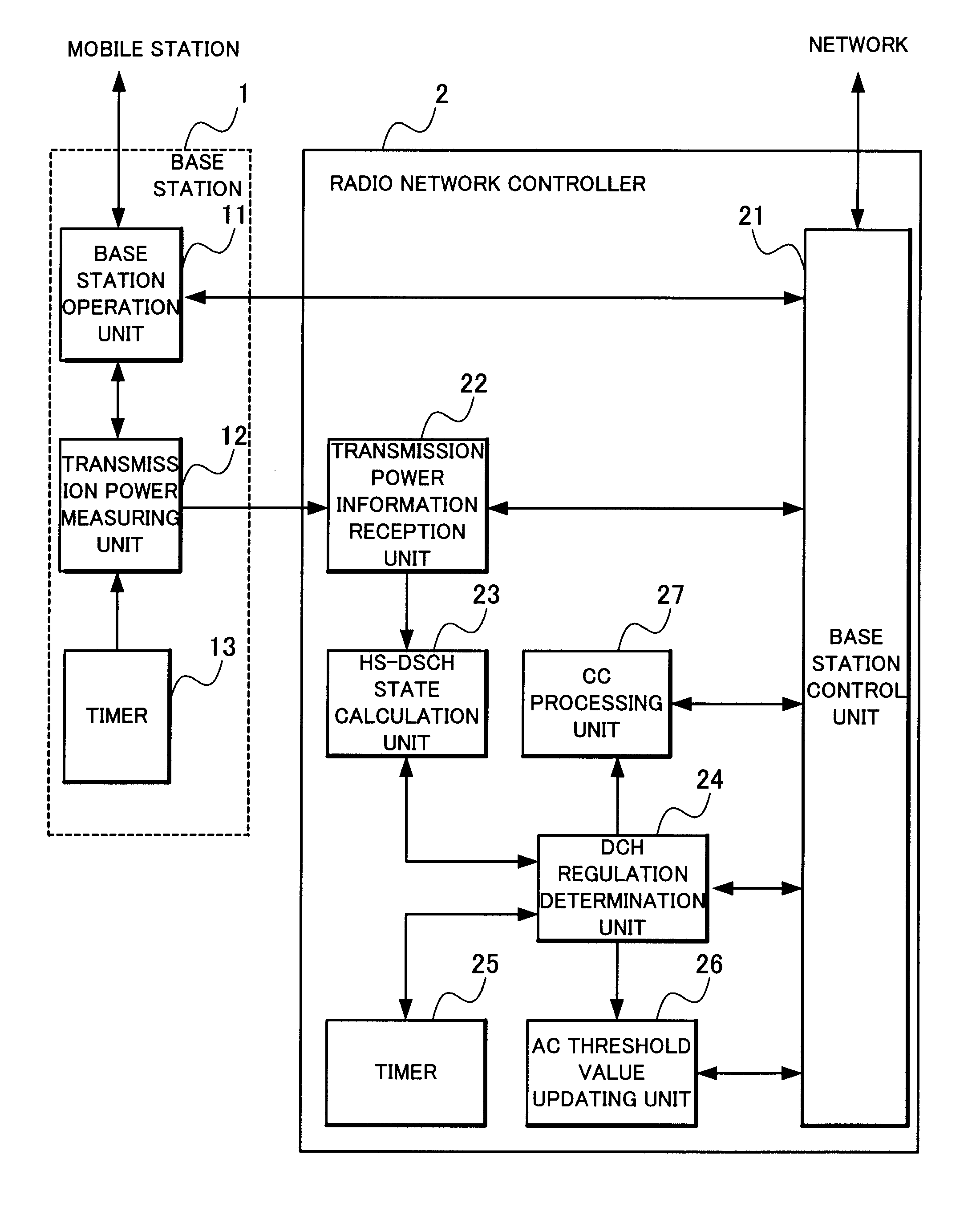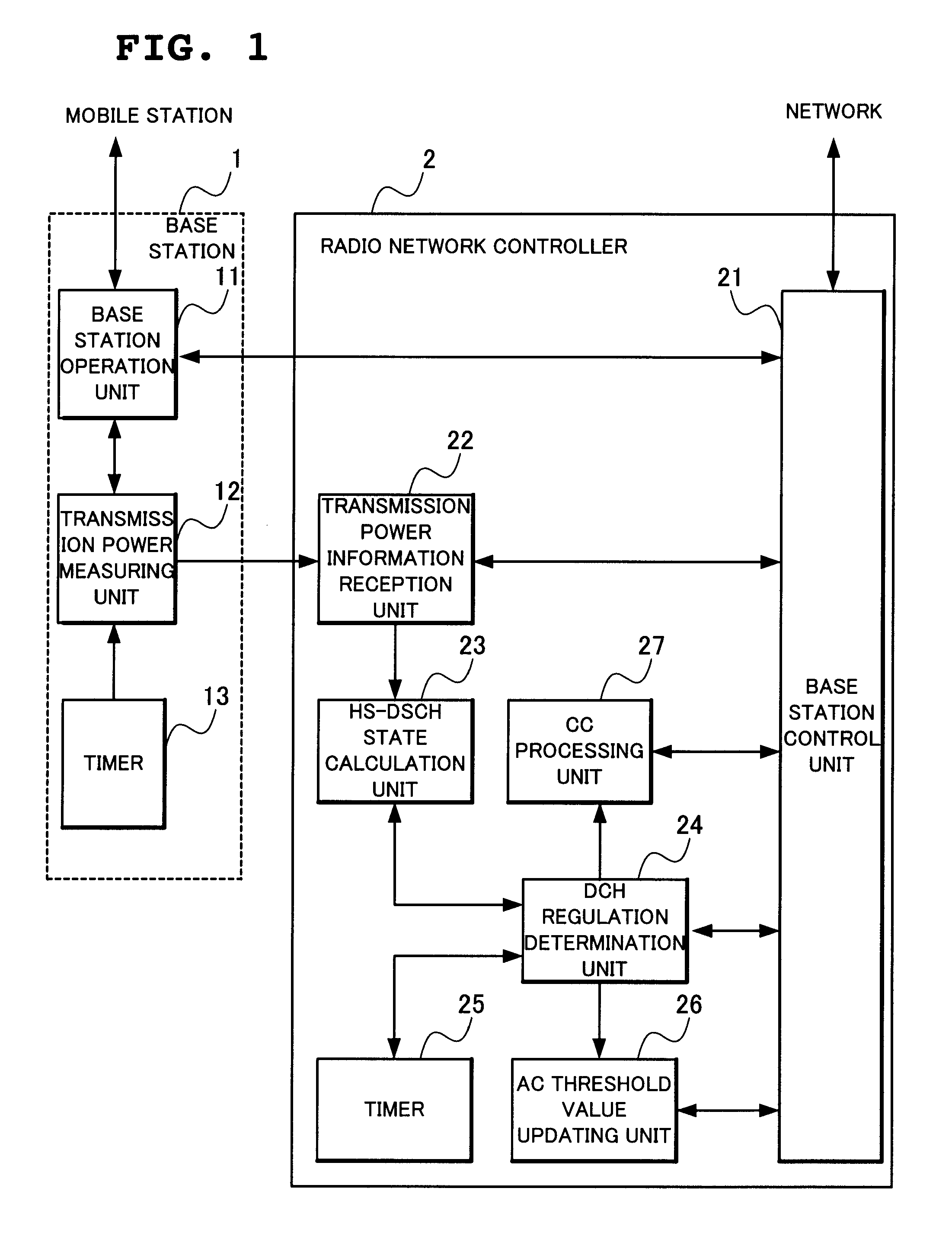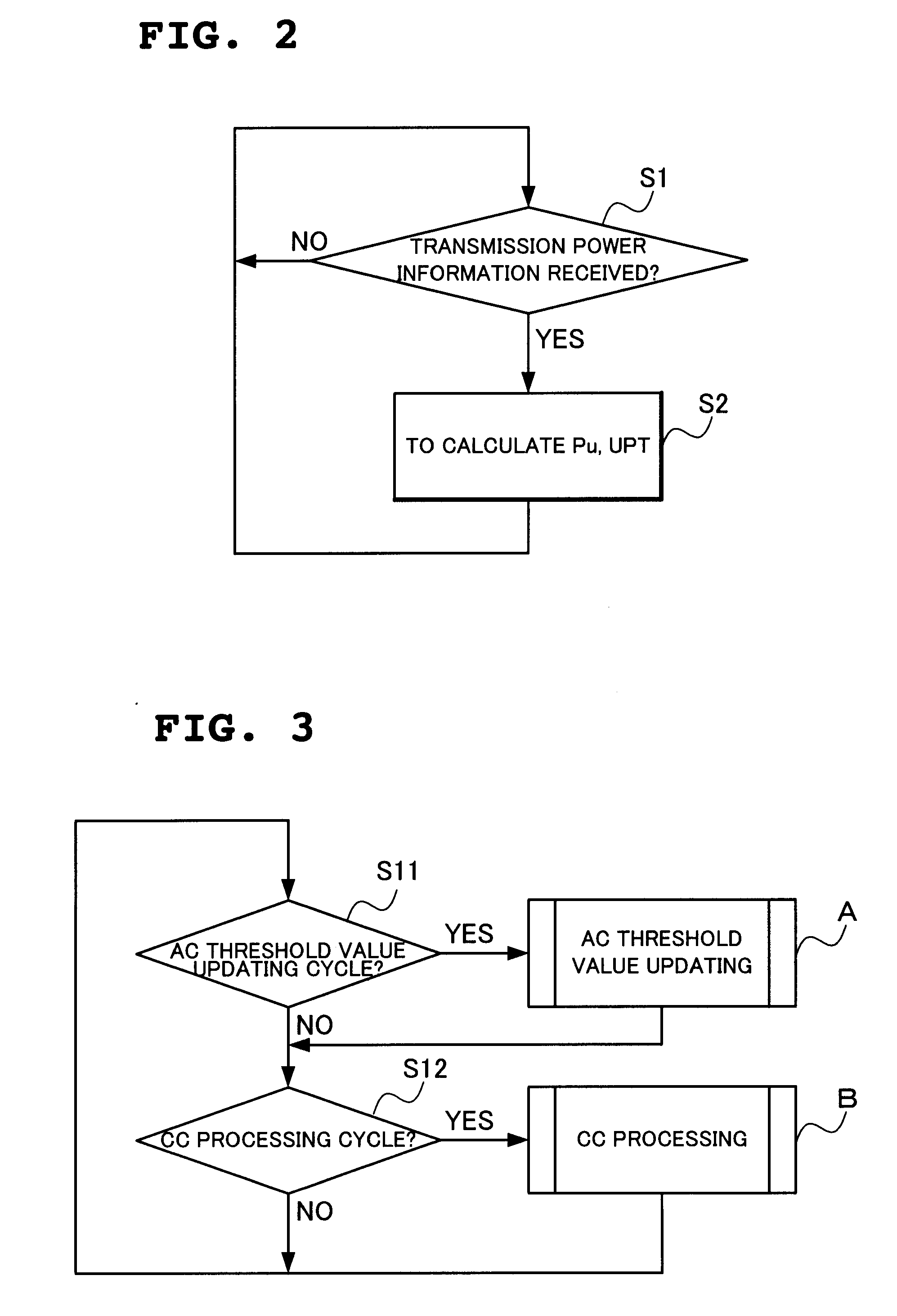Radio network controlling method, radio communication system and radio network controller
a radio network controller and radio communication system technology, applied in power management, wireless communication, wireless commuication services, etc., can solve the problems of radio network controllers not being the base station cannot be able to regulate the use of dpch
- Summary
- Abstract
- Description
- Claims
- Application Information
AI Technical Summary
Benefits of technology
Problems solved by technology
Method used
Image
Examples
first embodiment
[0087]Next, a first embodiment of the present invention will be described. FIG. 1 is a block diagram showing one example of a basic structure of a base station and a radio network controller in the embodiment of the present invention.
[0088]With reference to FIG. 1, a base station 1 includes a base station operation unit 11 connected to a plurality of mobile stations not shown, a transmission power measuring unit 12 and a timer 13. A radio network controller 2 includes a base station control unit 21 connected to a network not shown, a transmission power information reception unit 22, an HS-DSCH state calculation unit 23, a DCH regulation determination unit 24, a timer 25, an AC threshold value updating unit 26 and a CC processing unit 27.
[0089]HS-DSCH (High Speed-Downlink Shared Channel) is a transport channel name, which corresponds to HS-PDSCH as a physical channel. Similarly, DCH (Dedicated Channel) is a transport channel name, which corresponds to DPCH as a physical channel.
[0090...
second embodiment
[0125]Next, a second embodiment of the present invention will be described. Structure of the present embodiment is the same as that of the first embodiment shown in FIG. 1.
Description of Operation
[0126]Next, operation of the present embodiment will be descried with reference to the drawings.
[0127]The second embodiment differs from the first embodiment in changing the sequence chart of FIG. 6 to FIG. 7. With reference to FIG. 7, operation of the second embodiment of the present invention differs from that of the first embodiment in changing the steps at B4 and B5 in FIG. 6 to B11 and B12, respectively. More specifically, when there exists a mobile station having set up DCH of the IA class at B3, determine whether there exists a mobile station subscribing only to the IA class (S11) and when there exists a mobile station subscribing only to the IA class, make the base station control unit 21 select mobile stations to a maximum number of NRelease from among relevant mobile stations to r...
third embodiment
[0129]Next, a third embodiment of the present invention will be described. Structure of the present embodiment is the same as that of the first embodiment shown in FIG. 1.
Description of Operation
[0130]Operation of the present embodiment will be described with reference to the drawings. The third embodiment differs from the first embodiment in changing the sequence charts of FIG. 3 to FIG. 4 to those shown in FIG. 8 and FIG. 9.
[0131]With reference to FIG. 8, the present embodiment differs from the first embodiment in adding the steps of S21 and S22 prior to S11 in FIG. 3. More specifically, based on time-count information from the timer 25, the DCH regulation determination unit 24 determines whether the timer TimerAU_Update of the admission control threshold value updating cycle of DCH goes beyond an updating cycle TIAC_Update or not or whether a timer TimerCC of the congestion control executing updating cycle goes beyond an updating cycle TICC (S21). Upon determining that the TimerA...
PUM
 Login to View More
Login to View More Abstract
Description
Claims
Application Information
 Login to View More
Login to View More - R&D
- Intellectual Property
- Life Sciences
- Materials
- Tech Scout
- Unparalleled Data Quality
- Higher Quality Content
- 60% Fewer Hallucinations
Browse by: Latest US Patents, China's latest patents, Technical Efficacy Thesaurus, Application Domain, Technology Topic, Popular Technical Reports.
© 2025 PatSnap. All rights reserved.Legal|Privacy policy|Modern Slavery Act Transparency Statement|Sitemap|About US| Contact US: help@patsnap.com



